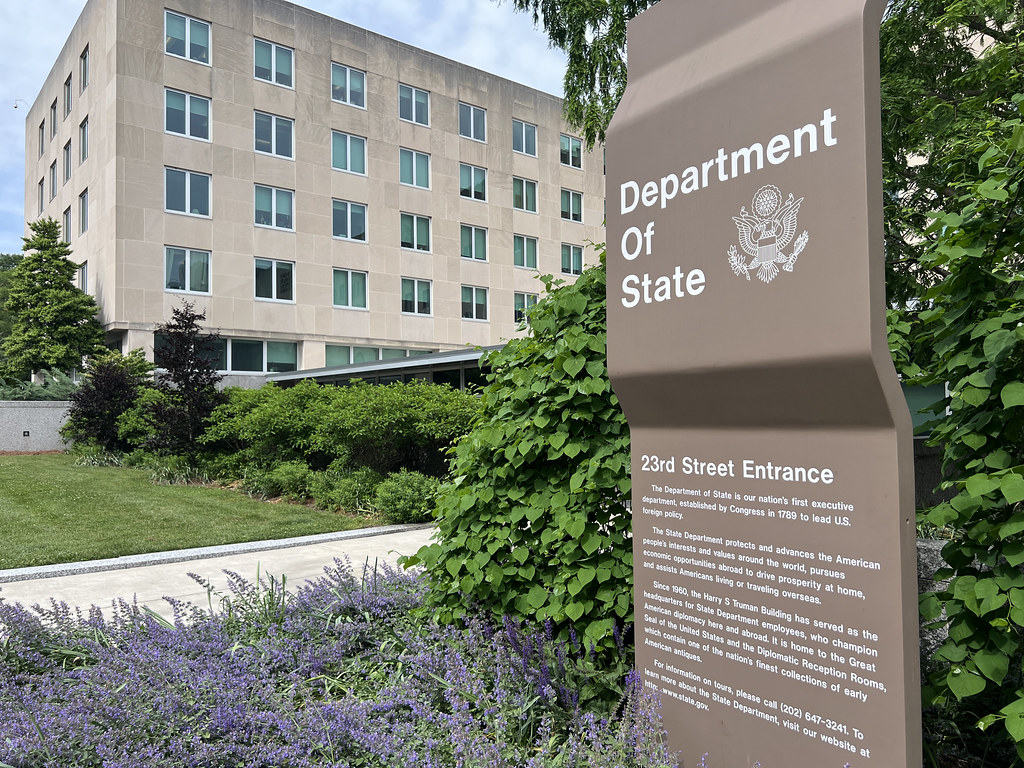The U.S. Department of State’s Bureau of African Affairs (AF) is the primary architect and implementer of American diplomatic, economic, and security policy in sub‐Saharan Africa. Through flagship initiatives AGOA, PEPFAR, Power Africa, and democracy‐building programs the Bureau has fostered billions in trade, reversed health crises, and supported institutional reforms. Yet chronic under resourcing, policy volatility, and bureaucratic friction have constrained its impact. The Trump administration’s FY 2026 proposal to halve the State Department budget and slash foreign aid by 75 percent, alongside plans to eliminate 132 bureaus, threatens core AF operations and critical services across the continent. In response, African leaders can bolster resilience by mobilizing domestic revenues (via tax reform and debt reprofiling), harnessing diaspora capital, deepening intra‐African trade under the AfCFTA, and strengthening governance through Agenda 2063. While full self‐sufficiency remains a medium‐term goal, these strategies lay a practicable roadmap to reduce dependence on U.S. assistance and sustain growth, health, and stability across Africa.
The Bureau of African Affairs: Mission, Structure, and Functions
Mission and Organizational Structure
The Bureau of African Affairs develops and manages U.S. policy toward the African continent, advising the Secretary of State and coordinating with USAID, the Department of Defense, and multilateral partners. AF is led by an Assistant Secretary supported by Deputy Assistant Secretaries for regional desks (East, West, Central, Southern Africa) and thematic offices (Human Rights, Economic Policy).
Core Functions
- Diplomatic Engagement: Orchestrating high‐level visits, bilateral dialogues, and participation in African Union and regional bodies.
- Economic Initiatives: Administering AGOA trade preferences and promoting U.S. private‐sector investment.
- Health and Humanitarian Aid: Implementing PEPFAR and emergency assistance for crises like famine and epidemics.
- Energy and Infrastructure: Leading Power Africa partnerships to add thousands of megawatts of clean energy capacity.
- Security Cooperation: Training and equipping African forces in counterterrorism and peacekeeping under programs such as the Trans‐Sahara Counterterrorism Partnership.
- Governance and Human Rights: Funding election monitoring, rule‐of‐law reforms, and civil‐society exchanges, including the Young African Leaders Initiative (YALI).
Signature Programs: Achievements and Impacts
African Growth and Opportunity Act (AGOA)
AGOA grants duty free access for eligible sub‐Saharan exports, generating over $40 billion in U.S. imports by 2022 and fostering job creation in apparel, agriculture, and energy sectors. The DRC’s reinstatement under AGOA in 2021 exemplified the program’s governance incentives.
PEPFAR (President’s Emergency Plan for AIDS Relief)
Launched in 2003, PEPFAR has invested more than $100 billion globally, achieving 95 percent viral suppression in adults and transforming HIV/AIDS from a fatal disease into a manageable condition for over 20 million Africans.
Power Africa
Since 2013, Power Africa has mobilized over $75 billion in public‐private financing commitments to add 30 000 MW of electricity capacity, improving business productivity and quality of life.
Democracy, Governance, and Human Rights
Programs like YALI have trained more than 150 000 emerging leaders, bolstering legislative effectiveness, media freedom, and civil‐society oversight.
Successes and Shortcomings
Notable Successes
- Trade Expansion: AGOA driven exports have underpinned annual GDP growth of up to 1 percent in beneficiary nations.
- Health Gains: PEPFAR funding contributed to a 60 percent decline in AIDS‐related deaths since 2003.
- Energy Access: Power Africa projects have electrified millions, reducing outages and fostering small‐business development.
Persistent Challenges
- Under‐Resourcing: Chronic budgetary gaps hinder staffing, regional presence, and rapid crisis response.
- Policy Volatility: Abrupt aid freezes and reinstatements under successive administrations disrupt long‐term planning.
- Bureaucratic Friction: Multi‐layered approval processes delay disbursement of critical funds during emergencies.
Trump Administration’s Recent Decisions
Budgetary and Organizational Overhaul
In April 2025, the Trump administration proposed cutting the State Department budget by over $30 billion (50 percent) and slashing foreign aid by 75 percent, which could shutter 27 missions 10 in Africa and consolidate 132 bureaus.
Aid Suspensions and Targeted Cuts
An early 2025 “stop‐work” order paused most foreign assistance, including PEPFAR programs, before partial restorations amid congressional pushback. In February 2025, an executive order cut $440 million in aid to South Africa over land‐rights and human‐rights disputes.
Transactional Engagement
Despite broad cuts, the administration reinstated DRC’s AGOA eligibility to protect critical mineral exports, reflecting a transactional “America First” approach.
African Leadership Responses and Pathways to Resilience
1. Domestic Revenue Mobilization
- Tax System Revamps: Strengthening VAT and excise‐tax bases could raise an additional 5–10 percent of GDP, per IMF recommendations .
- Debt Reprofiling: Gabon extended maturities on CFA franc debt to unlock $500 million in liquidity a replicable model for other states.
- “Sin” Taxes: Levies on tobacco, alcohol, and sugary drinks can fund health and social services sustainably.
2. Diaspora and Domestic Capital Markets
- Diaspora Bonds: Nigeria’s planned $10 billion diaspora bond aims to channel $1 billion monthly in remittances into infrastructure.
- Remittance Optimization: Lowering transfer fees and instituting matching grant schemes can leverage the $55 billion annual diaspora flow.
3. Intra-African Trade and Integration
- AfCFTA Acceleration: Full implementation could boost intra-African trade from 17 percent to 50 percent of total continental trade by 2030, unlocking economies of scale.
- Transport and Infrastructure: Upgrading 60 000 km of roads and rail links to meet a projected 28 percent freight demand surge under AfCFTA.
- Regional Financial Mechanisms: Empowering the African Monetary Fund and African Development Bank to provide counter cyclical credit in lieu of bilateral aid.
4. Governance, Transparency, and Partnerships
- Agenda 2063 Alignment: Embedding AU’s Agenda 2063 and SDGs into national budgets boosts investor confidence and accountability.
- Public-Private Partnerships: Clear PPP frameworks can mobilize private capital for energy, health, and education projects.
- SDG-Focused Budgeting: Mainstreaming SDGs into fiscal planning shields priority social sectors from cuts.
Prospects for Full Self-Sufficiency
Sub‐Saharan Africa’s revenue to GDP ratio rose from 15 percent in 2010 to nearly 19 percent in 2023, reducing external aid reliance. Diversified external partners China, the EU, Gulf states now supply over half of Africa’s foreign financing. Eritrea’s decades long self reliance offers lessons in political will and grassroots mobilization, though its social indicators remain comparatively low. Critical gaps persist in health (U.S. aid still covers 20 percent of major programs) and security (African standby forces underfunded), underscoring that full autonomy will require phased approaches and multilateral support.
Conclusion
The Bureau of African Affairs has been instrumental in building trade, health, energy, and governance across sub‐Saharan Africa. Trump administration cuts and reorganization proposals pose immediate risks to these gains. Yet African leaders possess a robust toolkit domestic revenue mobilization, diaspora engagement, continental trade, and institutional reforms under Agenda 2063 to mitigate disruptions and progressively reduce dependency on U.S. support. While complete self-sufficiency remains a long-term aspiration, strategic investments in these areas can secure sustainable development and stability, preserving hard won advances irrespective of shifts in U.S. policy.






